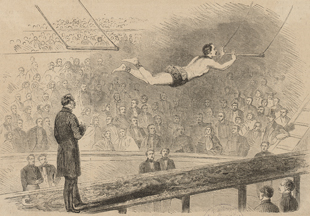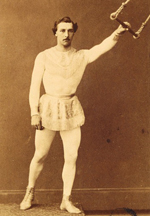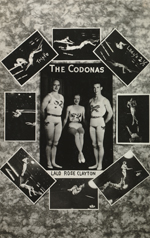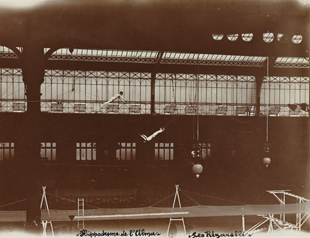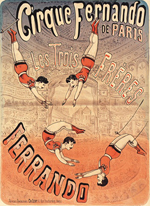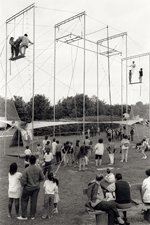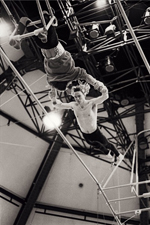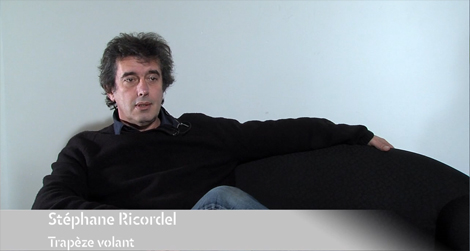by Magali Sizorn
The original apparatus was extremely simple, and consisted of a bar suspended from two ropes. And yet this was the object that gave rise to the first flying trapeze artists.
« There is someone who has shown himself gifted in occupying public opinion for almost a year. Never has a name been so quoted in the newspapers […] This favourite of the day is a man who, for the past several months, has captivated the most spiritual city in the world. This man is the god of the trapeze, the Napoleon of the rope. He is the famous Léotard. »
Le Courrier du Palais, Le Monde illustré, 1860
Close to the heavens
Léotard (1838-1870) enjoyed a dazzling success, and his act, which consisted in him swinging from one trapeze to another, quickly became a circus essential. His father had introduced him to the gymnastics hall in Toulouse, and there he discovered acrobats from the Louis Dejean company of the Napoléon circus. He started out there in 1859, in a Trapeze race act that the artistic elite loved. His reputation stretched beyond the French borders and he even published an autobiography, relating the birth of his vocation, and his successes, both as an artist and a Casanova (Léotard, 1860).
Alongside him, aerial artists valued taking risks and seeking out new feats. His successors in the French school saw the finest hours of trapeze acrobatics, in the late 19th and early 20th centuries. The Rainats for example, who in 1909 presented a cross trapeze act, with a structure composed of two flying trapezes. Moreover, Edmond Rainat was one of the first to perform a double somersault from "bar-to-bar" before "catcher" acrobatics become established.
Other schools were to play an important role in the history of the flying trapeze. The Mexican school first of all, was present in rings the world over, and famous names created its reputation, including the elegant and skilled Alfredo Codon (1893-1937), whose tragic destiny fed into the mythology of doomed acrobats. More recently, Miguel Vasquez was the first person ever to complete a quadruple somersault in public on June 10th 1982. The South African school marked the 1970s with flying trapeze companies favouring rapid execution, while at the same time, the Soviet school introduced a choreographic and dramatic dimension to flying trapeze acts, by composing veritable aerial ballets (Jacob, 2002).
The aesthetics of the fall
In this risky game, the "flyers" are the first to think of their safety. From Léotard onward they used sawdust mats, then nets, safety lines and auto-safety lines today, all of which are a call to order for these circus ring "Icarians." The aesthetics of flight are, after all, the aesthetics of fall, the imagined, feared and acted fall. The fall that marks bodies, and carries away those who were not able to catch their partner's hands…
Today, contemporary companies play with the multiple possibilities, from flight to fall, provided by the apparatus. Other physical paradigms are added to the myth of the super-man, evoking the troubles of contemporary society, aware of the risks and fragility of humanity.
Flying… at last
Flying trapeze baptisms and other aerial initiation rites are a joy to watch for ordinary earthlings on holiday. They extend the desires and pleasures of flight, swings and childhood games. Other, more hardened trapeze artists are lucky enough to escape having to subject their body to gravity: scientific and technical progress now provides "aerial earthlings" the occasion to fly. Trisha Brown's gravity defying dances from the late 1960s can be seen today in the experiments and shows of the choreographer Kitsou Dubois, in a concrete utopia, to which circus artists such as Chloé Moglia are invited. Thanks to astronautics technologies, the acrobatic body combines the logic of the art with that of sensation (Sizorn, 2013), exploring the possibilities of the void more than the "always more" dimension.
Interview



